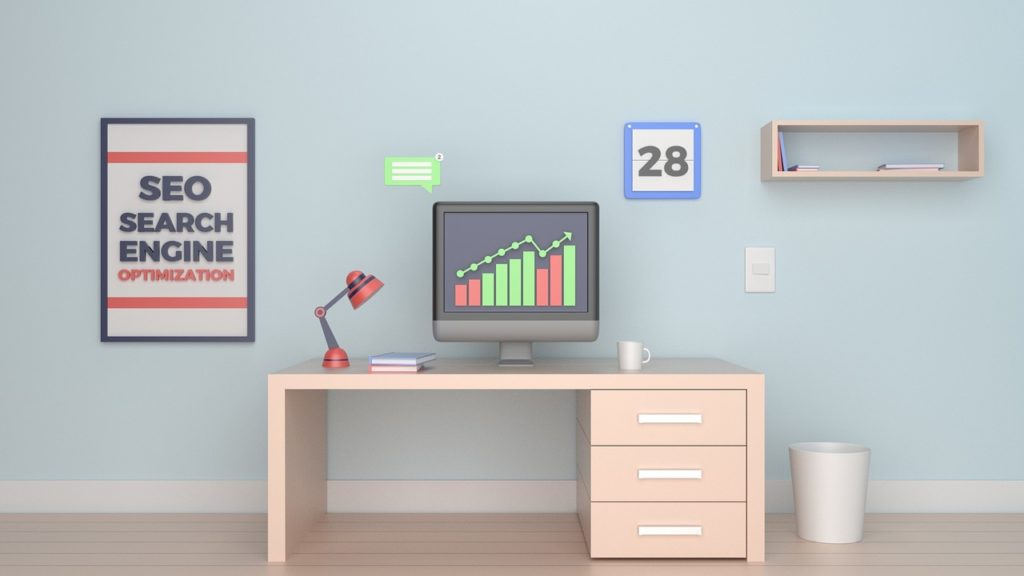The design of your website has a grand role in terms of its success and popularity. When it comes to web design, there’s one thing that is crucial for the performance in search engines, which is boosting the SEO strategy. A website can be well designed but still lack SEO optimization, which will cause it to perform poorly in search engines. And what use do users have of a well-designed website unless they can actually find it when they search for something online?
Knowing this, you should definitely turn your design into SEO-friendly web design. Here are some great tips that will help you do it.
1. Utilize the Power of Meta Tags
Meta tags are essential elements of any SEO strategy. You should focus on all the types of meta tags, but most importantly, on the meta title and descriptions. The title is the first thing a visitor will look at when they open your website. That’s why it must be appealing to the eye.
How do you use a title tag? You write it by using the main keyword on the page. On many websites, we are looking at a title that contains the company’s name. From an SEO point of view, this is far from ideal. That being said, if you want your site to rank higher in the search engines, you must include the main keywords in everything.
In addition to title tags, you should also optimize the meta tags. Meta tags use keywords and key phrases. Ideally, in a meta keyword tag, you should use the key phrases and main keywords of the page’s content. Moreover, a meta description tag will contain a concise and keyword-rich brief of the page.
Right now, SEO success depends significantly on meta tags. With that in mind, you should add a set of metadata on each page you create on the website. This way, the search engines can get a better grasp of what each of your pages offers to the users.
This is the very first thing that describes the content of your pages to a search engine, as well as the visitors of the website.
Basically, you’re creating the first impression for your website in the eyes of the search engines.
2. Image Optimization
A single image can tell a thousand words to a user, but not to the search engine. This is why, in addition to using quality photos and other design freebies to make the website visually-appealing, you must also optimize the images for the search engines.
If you’ve been asking yourself why a Google image search does not result in your images, the answer lies in alt attributes. Every website needs quality alt attributes if it wants to create successful image optimization.
Some fantastic tips to achieve this are:
· Use descriptive language to name all your images
· Make all descriptions simple and use plain language
· Choose the product angle and dimension of the pictures carefully
· Always reduce the file size of the images you’re using
· Choose the best file type
· Test your images’ performance on search engines
· Optimize the thumbnails
3. Optimize the XML Sitemap
This feature is especially important to sites that include a lot of content that isn’t entirely linked together. Or websites that don’t have a sufficient amount of external links. There are many websites like this today – sites with hundreds of pages you can’t possibly go through on your own.
To optimize all those pages for SEO, you need to work on your sitemap. If this is done correctly, you’ll get a map of the website that will show you what the most important pages are. Also, you will see which pages should link for SEO optimization purposes.
Here are some tips that will help you do this:
- Use plugins and tools to generate the sitemap without a hassle (try Google XML Sitemaps or enable the XML sitemaps on Yoast SEO);
- Prioritize the highest-quality multimedia (images, videos, infographics, etc.) in your sitemap;
- Submit a sitemap to Google by using the Google Search Console;
- Get rid of possible indexation issues;
- Create a dynamic XML sitemap for a big website (check out this guide);
- Create numerous sitemaps if the site has over 50 thousand URLs.
Once you are done working on your sitemap, check this website seo checker, which should show you whether or not you’ve done a good job with your sitemap, as well as the remaining tips found in this list. Tracking the success of your strategy is an essential step if you want to reach out to your target audience effectively and in continuity.
Unless you do this, you won’t really know whether or not your strategies have worked or they still need some changes.
4. Mobile Optimization
Even search engines put an accent on the use of mobiles. It has tweaked all algorithms to reflect this trend, which will ultimately kill your website ranking unless you bring your practices in line with it. Without good mobile optimization for your website, you can consider yourself invisible in search engines.
What should you do?
First of all, you need to check if your website is mobile friendly. To do this, you can use the test by Google, as well as the crawl errors on Google Search Console or tools like SEMrush.
If the results are negative, it is time to get busy. Some great tips for mobile optimization are:
· Choose a mobile-friendly theme
· Place strong and clear call-to-action at the top of each page
· Use the right font
· Create clickable areas in a way that they can be accessed with the use of a thumb
· Make content easily accessible
· Don’t use large graphics
· Limit the number of pop-ups
· Make use of the white space
· Optimize the local
· Try voice search
5. Aim for Responsiveness
Responsive web design will help all the goals we discussed above and drastically boost your search engine ranking. A website that’s compatible with all devices will enhance the visibility of your site. Also, it will allow more people to view and access your products and services.
To make the website design responsive, use these tricks:
· Make the site navigation search-engine friendly
· Place content that the search engine spiders can access and ‘read.’
· Focus on the image alt attributes
· Always write quality, SEO optimized, and fresh content
· Block the pages you don’t want indexed
The bottom line
Remember – there’s always a lot to be learned about website optimization. However, SEO optimization is here to stay. It is safe to say that this will remain a crucial element and factor in reaching your target audience.







![15+ Top Black Friday & Cyber Monday Deals for Developers and Designers [2023]](/blog/content/images/size/w960/2021/11/black-friday-deals-developers-1.jpg)
